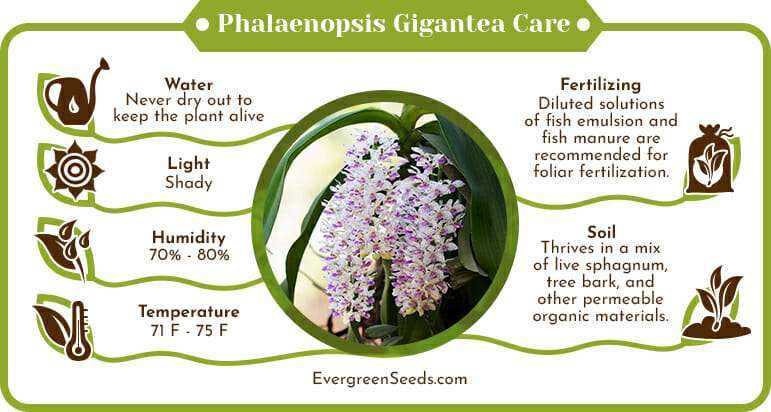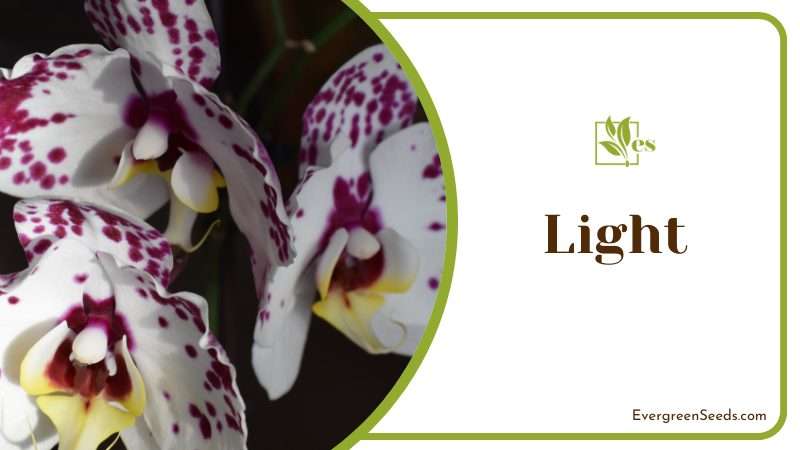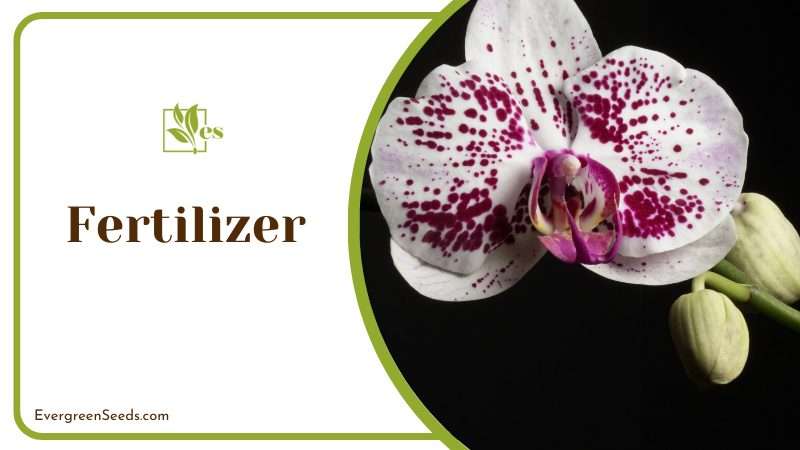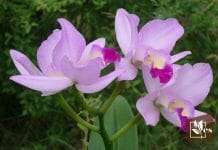- 7 Fruit Trees for Zone 9: The Perfect Fruit Garden - March 30, 2024
- How To Revive a Dying Avocado Tree: 9 Best Steps To Follow - March 30, 2024
- 8 Belt Dressing Alternatives: A Variety of Options - March 30, 2024
 The Phalaenopsis Gigantea orchid of the Orchidaceae family is a slow-growing, rare specimen found in tropical Borneo’s lowland canopies and hilly forests. Humidity enhances the blooms’ exhilarating sweet scent, often likened to sun-ripened sweet oranges. This natural perfume makes there Phalaenopsis genus plants very popular.
The Phalaenopsis Gigantea orchid of the Orchidaceae family is a slow-growing, rare specimen found in tropical Borneo’s lowland canopies and hilly forests. Humidity enhances the blooms’ exhilarating sweet scent, often likened to sun-ripened sweet oranges. This natural perfume makes there Phalaenopsis genus plants very popular.
The intoxicating fragrance is emitted by the pendulous multiple flower inflorescence of the Phalaenopsis Gigantea orchid. Orchid growers are often rewarded in the late summer and early fall with perfumed white creamy flowers with unique spots and unusual patterns.
JUMP TO TOPIC
What Is a Phalaenopsis Gigantea?
The Phalaenopsis Gigantea is an unusually large orchid that grows in warm and humid environmental conditions. Initially described by Johannes Jacobus Smith in 1909, the giant orchid is one of the most poached orchid plants.
Phalaenopsis Gigantea Care
The Phalaenopsis Gigantea is reputed to grow slowly, with a longer time to attain maturity than most phalaenopsis plants. The giant orchid plant is also susceptible to disease and may be slightly challenging to reproduce.
It may require more attention than other plants, but most cultivators would agree that the perfumed flowers are the perfect reward for all the hard work.
 Water
Water
The Phalaenopsis Gigantea has adapted and evolved over the years to flourish in conditions where the air moisture level is high and full. In cultivation, the orchid is a heavy drinker, but it does not tolerate stagnant water. As it is also susceptible to root and leaf rot, care must be taken to ensure that the plant’s roots, leaves, and substrate dry quickly.
During colder seasons, it is best to reduce the amount and frequency of watering. Roots should remain moist but not overly wet, and watering schedules should reflect these requirements.
On the other hand, roots should never dry out to keep the plant alive. Cultivators are advised to keep a personalized watering schedule to maintain the right amount of moisture in the roots. Overwatering your orchid can create white spots on its leaves or it can also change the orchid’s stem color into brown.
 Light
Light
The Gigantic Phalaenopsis has become entirely adapted to living in very shady conditions in the sun-dappled forests of its native habitat.

In the wild, the Phalaenopsis Gigantea occupies the canopies and forest clearings where the overhead leaves shade it from overly harsh light.
A delicate balance of lighting conditions must be present for the Phalaenopsis Gigantea to thrive and flower, especially when in cultivation. The orchid requires a light level of 8,000 to 10,000 lux, which means a very shady location outdoors or indoors. A plant grow light indoors will help control and provide the required lighting conditions.
 Soil
Soil
Being epiphytic and sometimes lithophytic, the Gigantic Phalaenopsis thrives in a mix of live sphagnum, tree bark, and other permeable organic materials. Quick-draining materials are crucial to the overall health of the orchid’s roots to prevent fungus infections and root rot.
Repotting the giant orchid is advised only when it is not yet mature, and any transfers should be as minimal as possible. Once mature, the Phalaenopsis Gigantea does not tolerate repotting as the activity disrupts their sensitive roots.
Orchid cultivators are encouraged to use high-quality materials and anticipate the growth of this unusual orchid to lessen the frequency of repotting if any at all. Root-bound giant orchids also tend to bloom better due to fewer root and condition changes.
 Temperature
Temperature
The Gigantic Phalaenopsis prefers a daytime temperature of 86 to 90 F for a warm environment. The ideal nighttime temperature for this giant orchid is 71 to 75 F, where it can get a respite from the day’s warmth. On average, the orchid prefers warmer climates over temperate ones, so the warmer the temperature, the better.
The Phalaenopsis Gigantea slows down in cooler environments, with some cultivators reporting that temperatures below 60 F will weaken the plant.
 Humidity
Humidity
The Gigantic Phalaenopsis has adapted exceptionally well over the years to thrive in the warm, humid environments of the tropical forests in Borneo. Humidity levels in tropical countries are typically high.
In cultivation, the giant orchid appreciates similar or better conditions than those in its native habitats. The ideal humidity level is approximately 70 to 80 percent. A humidifier is an excellent tool in maintaining the ideal level of air moisture content.
 Fertilizer
Fertilizer
In the wild, Phalaenopsis Gigantea orchids get nourishment from nearby decaying organic matter. When cultivated, the giant orchid enjoys a low concentration of fertilizer. Diluted solutions of fish emulsion and fish manure are recommended for foliar fertilization.

Root fertilization is ideally a low dilution of a quarter to half of the normal recommended dose of orchid fertilizers, especially in the summer. In winter seasons, fertilization should be stopped or, at the very least, extremely reduced in terms of amount and frequency.
– Rest Period
Phalaenopsis Gigantea orchids prefer to rest during the colder winter seasons. As highly tropical plants, these giant orchids do not tolerate drastic temperature fluctuations. As much as possible, orchid growers are encouraged to use lukewarm or slightly warm water during reduced misting or watering schedules for these orchids.
Propagation
Due to its unusual size and fragrance, the Phalaenopsis Gigantea is one of the most poached orchids in the wild. Highly desired by many orchid collectors, this species has slowly become one of the near-extinct plants in its native habitats.
The slow-growing habit of this magnificent orchid has made it quite coveted and, therefore, poached.
Luckily, orchid connoisseurs, cultivators, and growers have slowly propagated this decadent orchid plant. Due to its unhurried pace toward full maturity, many have resorted to creating seedlings.
Instead of using Phalaenopsis Gigantea seeds, baby plants are obtained from cuttings extracted from existing cultivated specimens. Collectors can now acquire these exotic plants from legitimate sellers without resorting to illegal and unethical measures.
Facts About the Phalaenopsis Orchid
– Other Names
The Phalaenopsis Gigantea goes by other names, one of which is the Gigantic Phalaenopsis, which is attributed to its large leaves. Other names are Phalaenopsis Gigantea F. Decolorata, Phalaenopsis Gigantea Var. Decolorata, Phalaenopsis Gigantea Var. Aurea, and Polychilos Gigantean.
– Size
The Phalaenopsis Gigantea is an unusually large orchid that grows in warm and humid environmental conditions. It can grow to over two feet in height, with some cultivators reporting specimens reaching almost three feet. The Giant Phalaenopsis leaves can grow up to a foot long, contributing to the overall size of the plant.
– Flowers
The blooms are two to three inches in size, with the summery fragrance of freshly picked ripe sweet oranges. The Phalaenopsis Gigantea flowers are usually fleshy and starry in shape, in pale greenish-white to yellowish hues. The petals are dotted with brown, chestnut, and maroon spots that are closely spaced.

Mature Gigantic Phalaenopsis orchids may produce hundreds of flowers on a 16-inch inflorescence. Full flowering maturity may be attained for orchid seedlings in four years, given that the orchid thrives in the ideal growth conditions. Ordinarily, this plant may take anywhere from six to 12 years to fully mature on its own.
The mature Phalaenopsis Gigantea can bloom at any time of the year, although its usual flowering period is in the late summer to early fall. During this period, the long pendulous clusters of raceme called racemose produce small triangular bracts.
These bracts soon open to reveal the full orchid flower, which unfurls its intoxicating fragrance into the air.
– Leaves
The Phalaenopsis Gigantea has short stems with large succulent bluish-green leaves with a silvery gray tinge. The leaves usually grow over a foot long, and the succulent nature of the leaves enables the plant to hold water. The leaves are elliptical in shape, with a shiny and leathery texture to the touch.
– Roots
The large noodle-like roots of the Phalaenopsis Gigantea are white and plump. The roots of this giant orchid are instrumental in maintaining the overall health of the plant. Since healthy plump roots provide hydration, the orchid relies on a well-maintained root system.
Growers should be intentional when they repot Phalaenopsis Gigantea as the orchid has extremely sensitive roots that easily get disturbed.
– Habitat
The Phalaenopsis Gigantea is naturally found in the northern part of Borneo, specifically in the Merutai area and the Tiger Mountain of Sabah. They can also sometimes be found in the steamy, sweltering thickets of the forests in Indonesia.
They thrive in the hot, humid forests where they are found clinging to the forks of tree branches and sometimes on the faces of rocks. The Gigantic Phalaenopsis prefers warm, damp conditions for its growth, as it has become accustomed to the diffused lighting of the tropical forests.





